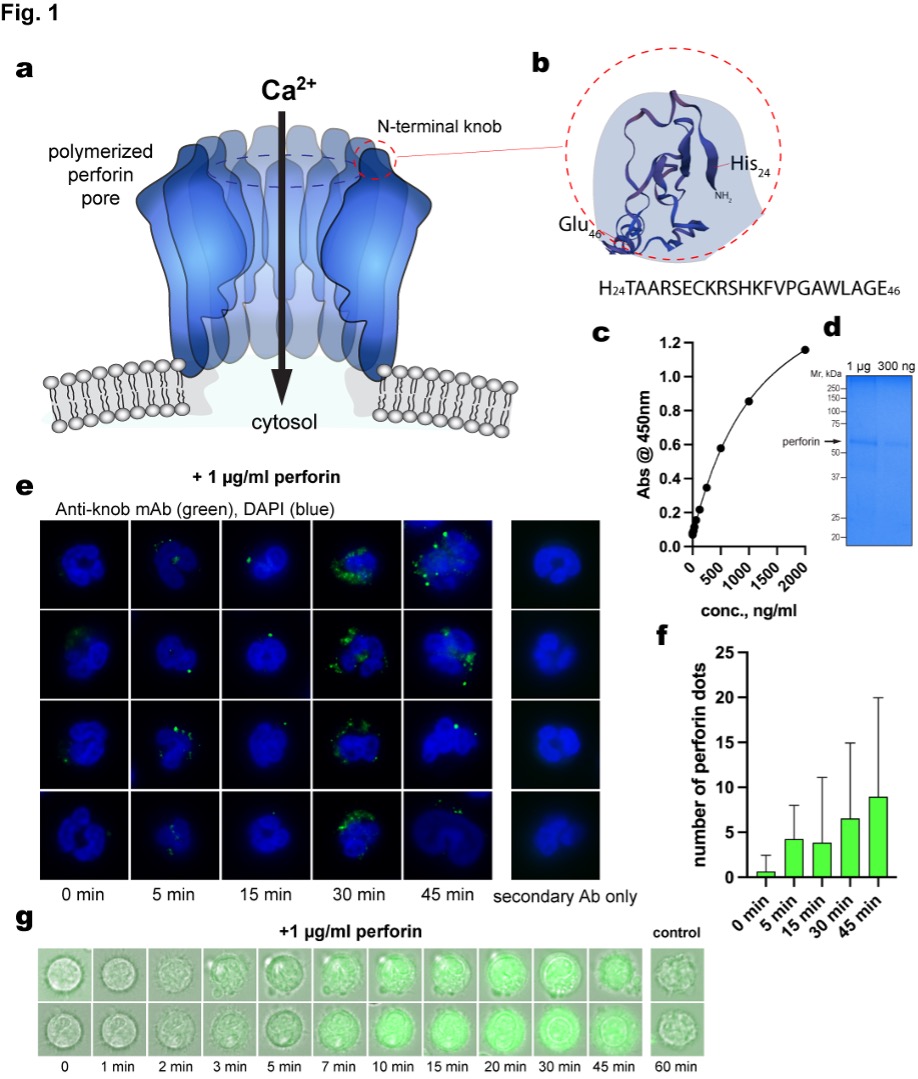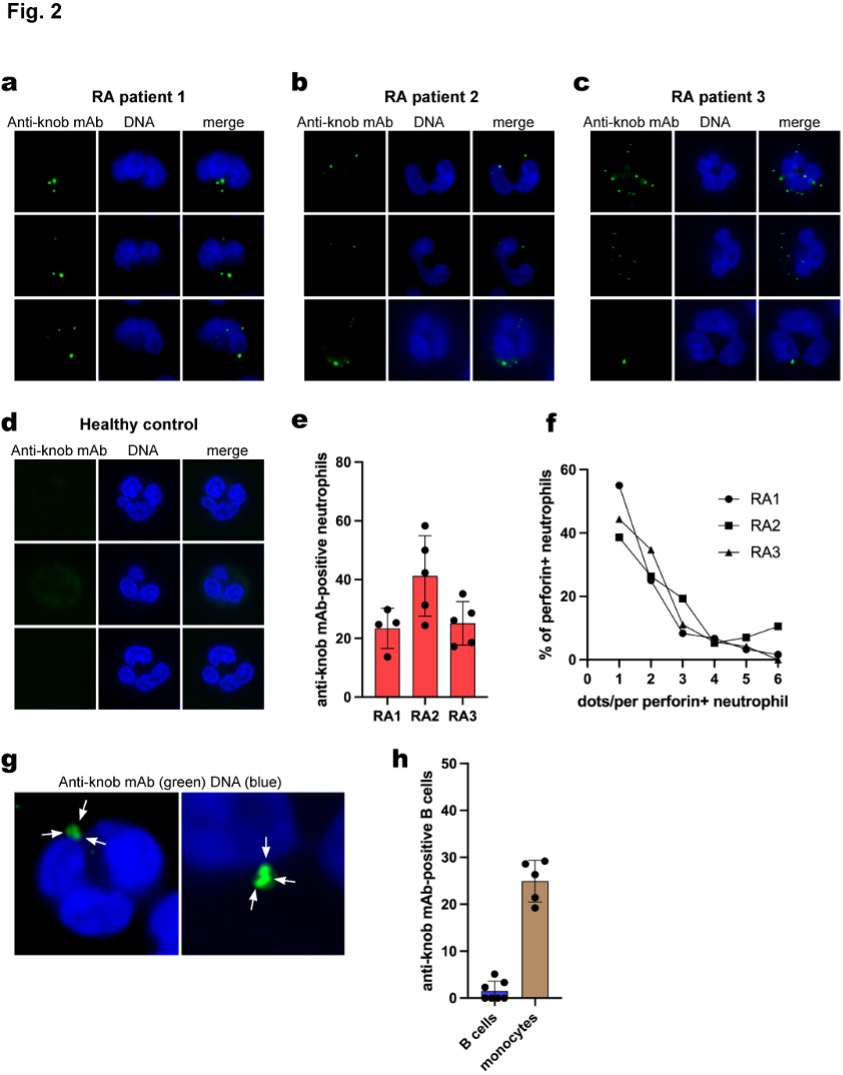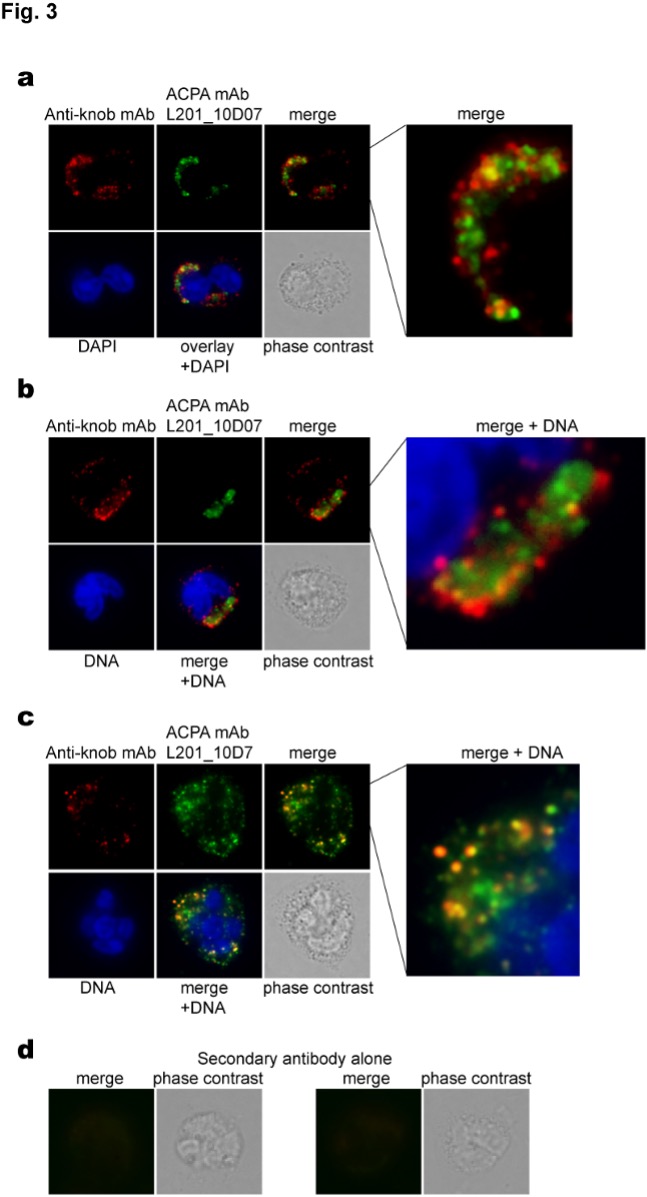Session Information
Session Type: Poster Session A
Session Time: 10:30AM-12:30PM
Background/Purpose: Anti-citrullinated protein autoantibodies (ACPA) are diagnostic for rheumatoid arthritis (RA). The antigens recognized by these autoantibodies are produced by protein arginine deiminases (PADs), particularly PAD4. However, it remains unknown why and how PAD4 causes this aberrant citrullination in RA.
Methods: To be able to detect polymerized perforin pores on the surface of freshly isolated RA neutrophils, we developed a monoclonal antibody against the exposed N-terminal knob of perforin.
Results: Here, we report that poly-perforin pores are present on freshly isolated neutrophils from RA patients, but not on healthy donor neutrophils. Neutrophils with perforin pores also contained intracellular citrullinated proteins in the region adjacent to the pores. This response was replicated in vitro by treating neutrophils with purified perforin, which generated intense dots of anti-perforin immunofluorescence, calcium influx, and intracellular citrullination. Extensive neutrophil killing in Felty’s syndrome, an aggressive form of RA, correlated with particularly high ACPA, and PAD4 autoantibodies. In contrast, other forms of death, including NETosis, apoptosis, and pyroptosis,produced minimal citrullination.
Conclusion: We conclude that neutrophil targeting by perforin leading to intracellular citrullination takes place in patients with RA.
To cite this abstract in AMA style:
Moadab N, Gazitt T, Najjar R, Le E, Nelson J, Joshua V, Elkon K, Grönwall C, Mustelin T. Evidence of Membranolytic Targeting and Intracellular Citrullinationin Neutrophils Isolated from Patients with Rheumatoid Arthritis [abstract]. Arthritis Rheumatol. 2024; 76 (suppl 9). https://acrabstracts.org/abstract/evidence-of-membranolytic-targeting-and-intracellular-citrullinationin-neutrophils-isolated-from-patients-with-rheumatoid-arthritis/. Accessed .« Back to ACR Convergence 2024
ACR Meeting Abstracts - https://acrabstracts.org/abstract/evidence-of-membranolytic-targeting-and-intracellular-citrullinationin-neutrophils-isolated-from-patients-with-rheumatoid-arthritis/



